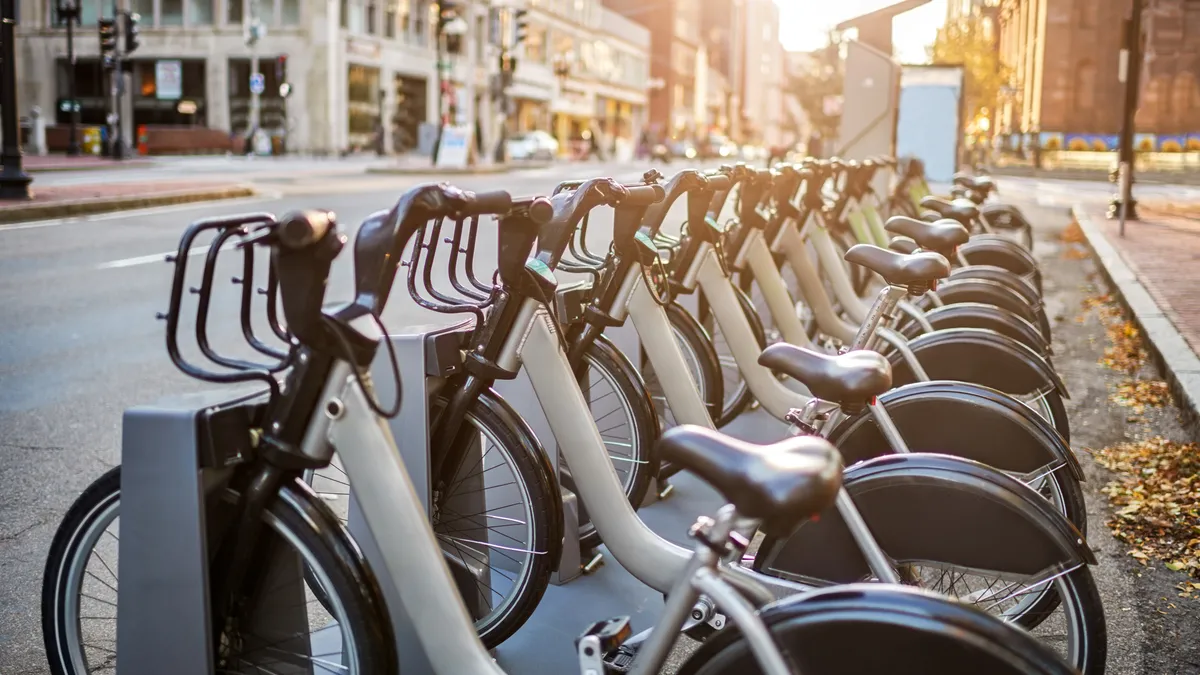Successful micromobility programs require long-term relationships, integration with public transit and limited service operators, said panelists during a webinar last week hosted by the Eno Center for Transportation.
Cary Bearn, senior program manager of biking at the National Association of City Transportation Officials, said that over the past decade, shared mobility evolved from relatively simple bike-share programs into multimodal programs involving professional partnerships between cities and contractors.
Today, local governments are thinking more about which populations and neighborhoods they want to provide service to and how to regulate it to ensure micromobility services are viable and equitable, she said. Cities are increasingly working on more collaborative, long-term operating agreements that are flexible but hold operators to a high standard, Bearn said. They’re also building dedicated micromobility infrastructure to ensure that people can travel safely and conveniently, she said.
Melinda Hanson, founder of Brightside, an urban transit consulting firm, said greater collaboration among operators and local governments became necessary as the market matured since micromobility often works best when just a few service providers work closely with local officials.
“Every company I'm familiar with has gotten much more professional in their operations and cooperation with cities,” she said. “It went from 'do whatever you want' to hiring professional folks who really understand policies and transportation systems and how to integrate micromobilty with public transit.”
Joshua Johnson, Lyft’s senior manager for transit, bikes and scooters policy, said that partnerships must be long-term for micromobility to succeed. Short-term arrangements, such as a one-year pilot program, won’t create the infrastructure necessary to encourage service operators to invest or turn casual riders into regular ones, he added.
“Long-term contracts are really important to us,” Johnson said.
He said that such commitments might become more important as micromobility ridership recovers to pre-COVID-19 pandemic levels and people shift their travel behavior. With more people relying on micromobility for daily transportation and working from home, micromobility service operators and cities are adjusting their operations and infrastructure investments. For instance, micromobility companies are offering memberships to riders to encourage them to use their services more often, and many new docking stations for bikes are located along bike trails and in parks, he said.
As more people return to the office, micromobility ridership has increased during typical commuting hours, Johnson said. That’s helped drive membership growth.
“Members take 10 times as many rides as the casual rider,” he said.
Hanson said that the shift from bikes to scooters has also helped micromobility grow, which surprised some people. “Electric scooters attracted a whole new group of people who never took bikeshare before,” she said.
Johnson added that “nearly half of [Lyft’s] bike and scooter members who have a car use it less” because they can ride a bike or scooter, suggesting that more space and subsidies should be dedicated to micromobility.











